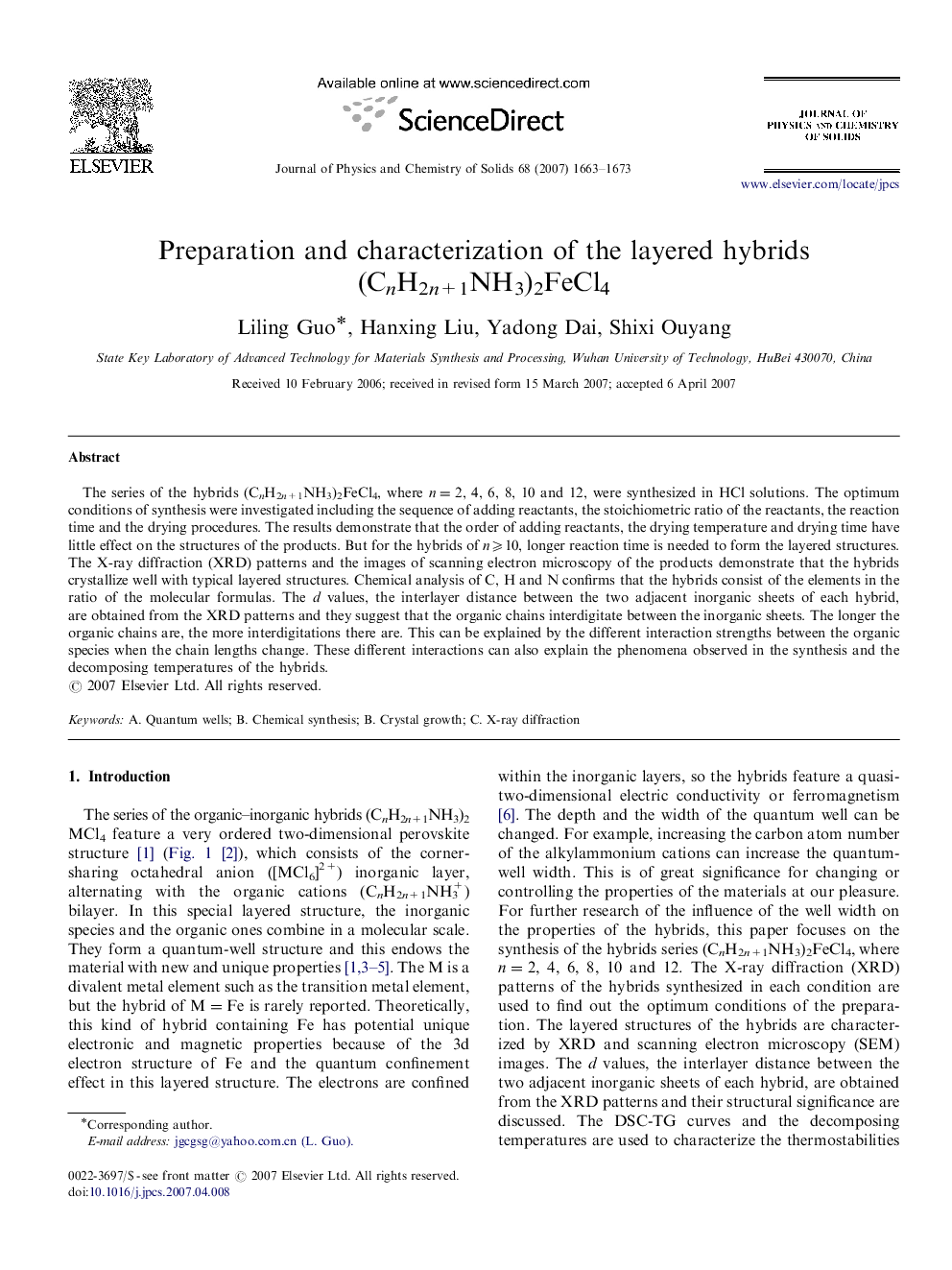| Article ID | Journal | Published Year | Pages | File Type |
|---|---|---|---|---|
| 1518032 | Journal of Physics and Chemistry of Solids | 2007 | 11 Pages |
The series of the hybrids (CnH2n+1NH3)2FeCl4, where n=2, 4, 6, 8, 10 and 12, were synthesized in HCl solutions. The optimum conditions of synthesis were investigated including the sequence of adding reactants, the stoichiometric ratio of the reactants, the reaction time and the drying procedures. The results demonstrate that the order of adding reactants, the drying temperature and drying time have little effect on the structures of the products. But for the hybrids of n⩾10, longer reaction time is needed to form the layered structures. The X-ray diffraction (XRD) patterns and the images of scanning electron microscopy of the products demonstrate that the hybrids crystallize well with typical layered structures. Chemical analysis of C, H and N confirms that the hybrids consist of the elements in the ratio of the molecular formulas. The d values, the interlayer distance between the two adjacent inorganic sheets of each hybrid, are obtained from the XRD patterns and they suggest that the organic chains interdigitate between the inorganic sheets. The longer the organic chains are, the more interdigitations there are. This can be explained by the different interaction strengths between the organic species when the chain lengths change. These different interactions can also explain the phenomena observed in the synthesis and the decomposing temperatures of the hybrids.
